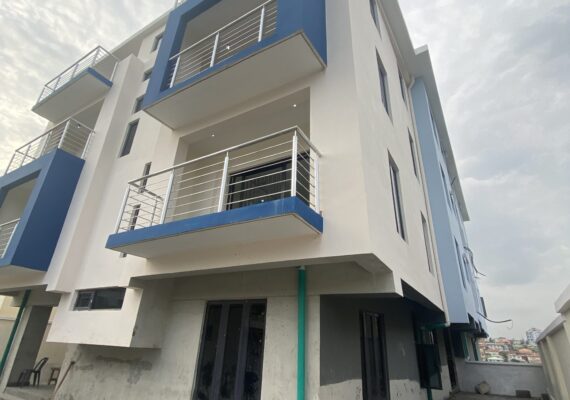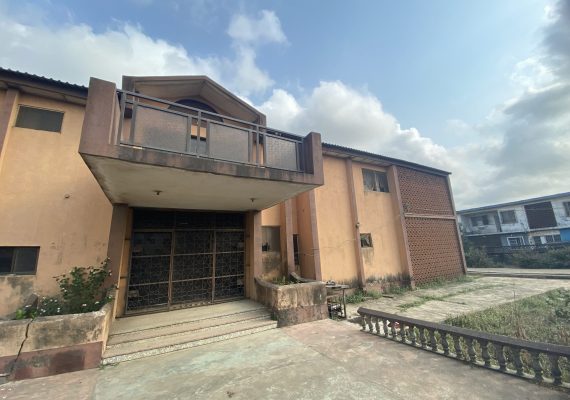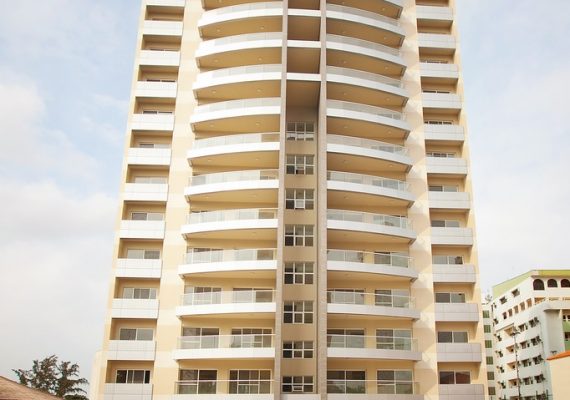For so long, Nigeria has been reported to be suffering from a 17 million housing deficit. That figure, which has since been bandied around, is the statistics experts depend on to speak to the issue of housing development in Nigeria until recently when the Minister of Works and Housing, Babatunde Raji Fashola, debunked it at the third series of the Lafarge Africa-organised Concrete Ideas webinar. For Fashola, housing development in Nigeria is about identifying and redefining the psychological and sociological landscape of the national discourse. Chris Paul reports
Among the issues discussed at the recently held Concrete Ideas webinar organised by Lafarge Africa Plc, with the theme, ‘New Solutions to Nigeria’s Urban Housing’, one major revelation that virtually shook the virtual programme was the fact that the data pushed around as the nation’s housing deficit was false.
Currently, in its third edition, the Concrete Ideas webinar of Lafarge Africa began in October 2020. Anchored by the CNN African Voices Presenter, Arit Okpo, some of the participants included Lafarge’s Chairman, Prince Adebode Adefioye; the Country Chief Executive Officer, Khaled El Dokani; and Folashade Ambrose-Medebem, Director, Communications, Public Affairs and Sustainable Development, Lafarge Africa. The panelists were, Dr. Ayo Teriba; Bldr. Kunle Awobodu; Amaka Nwokolo; and Jumoke Adegunle.
Debunked by the Minister of Works and Housing, Babatunde Raji Fashola, the Nigerian housing deficit data, according to him, is a misdiagnosis of the problem, stressing that, “Nigeria does not have a deficit of 22 million homes; there is no proven data to support that statement or claim.”
When he took office as minister of works and housing, one of the things that he was confronted with, was 17 million homes. “How do we deliver that? What is the data? Where is the source? And somebody said, World Bank; so I invited the country manager for World Bank and said, “look, listen, this is credited to you” he says, “no we have no hand in it, we know nothing about it.” Then somebody said it was African development bank, so I call the country representative for African development and he says “no, we know nothing about it,” he narrated.
Even when he confronted the Statistician-General of the Nigerian Bureau of Statistics (NBS), Dr. Yemi Kale, about the figure, he said he had no such data. Before Fashola would freak out, the NBS chief executive, told the minister, “Calm down. So, let’s reason through this; I do have one data that is credible, very reliable. I have a data of households in Nigeria because we did that study and we have the data and we have 35 million households for the whole of Nigeria.”
A household, by the way, is one family. Fashola then reasoned that if the analysis is correct and 17 million is the deficit, then it means that half of Nigeria is homeless. “That doesn’t stand up to logical scrutiny. But when we start collecting more data in the future, we will see what we can do,” he said.
Not satisfied, off he went to the planning commission that conducts the census; and determined that the next census must include home ownership and home rental sessions. He wanted to know, because, according to him, “We can’t solve a problem that we cannot measure, it’s not possible. Now, I kept digging and I found where 17 million came from, I found it, it came from my ministry in 2012.”
There was a policy document and, in the prefix, somebody just put it there. He called his predecessor and asked her, “Did you sign this and she said yes and her position is to look, there was no data to support what was there. So, quote me, “Nigeria does not have a 17 million or 22 million housing deficit, it’s a lie.”
It is instructive that the 17 million deficits came around the time the household survey put the number of Nigerian households at 35 million. Even when the unverified data was updated to 45 million households, the housing deficits was 22 million, the number of houses that needed to be built to fill the gap in the country, remained around 48 percent.
This is the data experts including Leilani Farha, a United Nations special rapporteur on adequate housing have been quoting as the housing deficit in Nigeria. “So people are just adding up,” Fashola submitted.
The webinar topic, New Solutions for Nigeria’s Urban, speaks to the location of the problem, according to Fashola, “it’s an urban problem, it’s not a rural problem, so let’s go from there, we don’t know the number, but it’s an urban problem. So, in most of Nigeria’s rural areas, they don’t have housing challenges, in fact many of people sweating for an apartment in the city of Lagos, Aba, Kano, Kaduna, Abuja probably own a four-bedroom, five-bedroom bungalow in their village empty or used and I think therefore Lafarge is heading off in the right direction, it is an urban problem,” he said.
Considering the fact that housing problems have risen as rapid urbanization, has increased, the issue then becomes that of demand and supply. “Now even in those urban centres and I’ve traveled all of Nigeria’s states by road, there are empty houses, used houses, unoccupied houses and therefore before we begin to even build, the question is, have we optimized the value of what we have? Why do you have a shortage when you have unused assets? Therefore, we should begin to think, is there really a 22 million housing demand? Really untrue, because it’s a business. So, if there is no market, is Lafarge ready to build 22 million homes? Who will buy it?,” asked Fashola.
In the last one year, the Works and Housing Ministry under his watch has developed a national policy to increase the country’s use of cement and stone in the building industry, especially for roads and as a result of that the ministry was challenged.
In response, the ministry started developing a new design manual for concrete roads which he noted he had shared with all the states of the federation and the FCT at the national council for works last year. “And as you can see, we are increasing the footprint of concrete roads in the country, very slowly, but surely, the Apapa-Ijora road is one of the new looks of what concrete roads in Nigeria can do. Obajana and Kaaba is one, we are also doing that in Bonny working with the NLNG, the first two were by your competitors so I am very conscious not to go there, but there is room for more concrete roads in the Nigerian space and there’s a design manual to guide us now,” Fashola disclosed.
Given that a UN habitat report says that 79 percent of Nigerians live in slums and in the light of the challenge the minister has identified, it will be interesting to understand his vision for urban housing in Nigeria.
“In the last four years at least, the footprint of private sector players in the real estate sector is increasing and there is hardly a day now where you’re on TV or on radio where you don’t see adverts and all of that housing estates offerings. So, that’s a very interesting place for Nigeria to be and it’s a good place.
“What can government do? I think that to strengthen that space, is to use its fiscal and monetary policy muscles to make it even more prolific to play. So, bring down the rates, interest and lending rates. Those are fiscal and monetary issues, longer tenure financing and you can then see the impact.
“So, these are conversations I am having with my colleague, the Minister for Finance Budget and National Planning, which is one thing. The other thing that government can do also, which was what I canvassed at our recent national council on lands and housing, that’s a council that involves all the 36 states, and the FCT. We hold an annual meeting to discuss policy,” he said.
For him, the state houses of assembly, the state attorney generals must rise up to intervene on behalf of their residents by way of rent control, because the minister believes housing must be discussed along the terms of ownership and rental. “Perhaps, before you get onto the ownership ladder, you get onto the rental ladder first, but where you have people asking citizens to pay three years rent in advance from salaries earned monthly in arrears, there’s a mismatch there, housing will never be affordable. And the bulk of the properties, on offer, do not belong to government. They belong to citizens, private citizens and they are in the sub-nationals, so this is a space where I urge the attorney generals to get creative, find the kind of legislation they can initiate.
“There are examples to draw from. In Lagos, when I was governor, so for example, places like Victoria Island were not covered by that verdict; because businesses wanted long-term financing for corporate residential quarters, but it was different for places like Surulere, Mushin, Yaba, Ajegunle, and so on, and those are the places where the demand curve is at the sharpest.”
One of the conversations he had when Lafarge visited his office was the need to change existing building methods. According to him, the demographics in need of housing are largely the millennial. “The 20-something year old, they are the ones who have the purchasing power, but they don’t want five-bedroom houses, they live in small spaces now, and they carry their back pack with their laptop and wi-fi, they use showers they don’t use baths. So, again, we must begin to create designs for those who have the economic power to really demand and consume. And I speak from experience because not only am I ministering over houses, I also have personal property and I am trying to develop one along these lines, but the first thing I did was to do a market survey, what’s available? And I saw scores of unoccupied houses and I said hold on we can’t borrow money to build a house that there’s no demand for. So, let’s see what the market is like; maybe COVID has affected the market and so on and so forth.”
But he wonders whether the country will get to a place where it was like before COVID and it is instructive to ask that question because it would then be a defining barometer whether rural-urban migration continues because if the demand for offices is no longer there, at least not at the rate at which high-rise buildings were springing up and lots of businesses can be done from home, then the need to have a rethink investment in real estate, is real.
“So, again, if I can talk to you from my village because I have broadband, why should I come to the city and be struggling for a house and it’s going to affect how other businesses are managed. Urbanisation, in my view, is partly what informed the development of high-rise clusters and it has also informed how we feed, how we eat during work hours, fast food deliveries around urban connotations and is this going to continue? So, as we plan to invest less, what does the future reasonably look like?
“My final take really about urbanisation and urban regeneration is that there’s a fine line there between urban regeneration and gentrification and we need to be careful and so there’s a way where we must find the balance, but I think the partnerships are the instructive things, the private sector has a big role to play here and it must be driven by data science. What’s the market saying, do you want to build more empty houses? Because people can’t afford them; because people don’t like the way they’ve been built,” Fashola said.
Acknowledging the dynamics involved in the housing industry in the country, one of the things the minister has come to terms with is that the federal government in a federal arrangement does not control land, the states do. Thus, land is a very important component for addressing housing solutions; according to him, even if all the state governments were building as many of them, it does not minimise the fact that housing is a commodity. So, he said, it is something that the private sector can leverage their entrepreneurial skills to deliver.
Back to the issue empty and unoccupied housing, where you have a case in which houses exist, but unoccupied, the issue then is that of accessibility. Critical, therefore, is the conversation on the lack of data on the number of people needing houses. Immediately, the discourse brings to the burner the need to look at low income housing option as there are so many slums dotting the urban stratosphere in Nigeria.
Given that over 79 percent of Nigerians live in the slums, according to a UN report, it will suffice to know the policy response the Works and Housing ministry towards resolving the crisis.
For the minister, a slum by definition suggests that there is a house or perhaps the absence of a supporting environment in terms of water supply, waste disposal and management, electricity, sanitation, among others.
As a former governor, Fashola did some projects back in Lagos and he said, “There’s a lot going on, in fact my ministry has a department called the urban renewal department, so we go through communities’ annual budgets, design an urbanisation programme and then we fund it through budget dealing with housing, water supply, health care and all of that.”
But he conceded that there is no society without this problem, saying, “None in the world that I know of, so each society has to deal with them as they come. The other thing to point out as I said is that the experience with COVID and the reaction may be the tipping point about urbanisation. We may just provide a tipping point and the process become reversed and what is going on now where we’re building over 13,000 kilometers of road and bridge network, repair, expansion, and renovation as those services reach the hinterland and there’s a new economy developing.”
These emerging economies are not in the cities, but in the hinterland, so he says, “Opportunities that people are coming to town to look for is beginning to come, closer home to them.
Source: This Day Live







